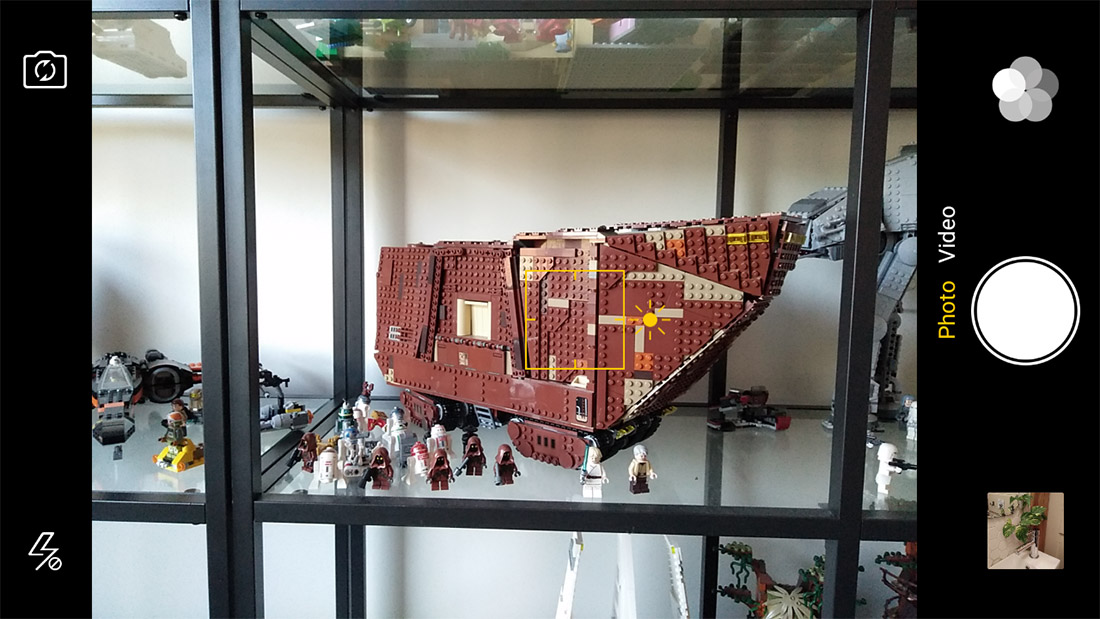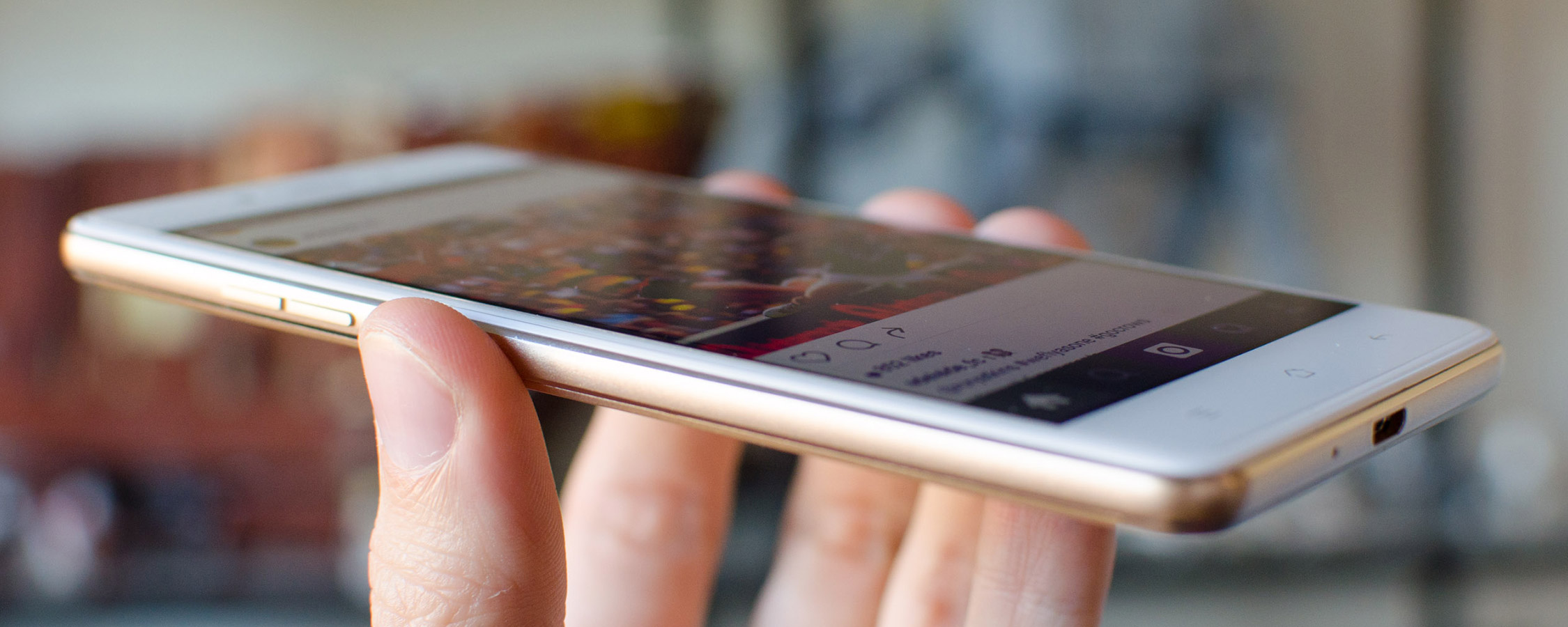Cameras
The Oppo F1 is equipped with a 13-megapixel 1/3.06" CMOS sensor on the rear, featuring 1.12µm pixels, paired with a 25mm-equivalent f/2.2 lens. I believe this sensor is a Sony IMX278, which seems to be a favorite of Oppo, but I'm not 100% convinced as Oppo could also be sourcing very similar Samsung sensors as well.
The front camera, which Oppo is heavily touting, is an 8-megapixel 1/4" CMOS sensor with 1.12µm pixels, paired with a 27mm-equivalent f/2.0 lens. Due to the wider aperture, slightly more light can reach this sensor than the rear sensor, although the light gathering abilities of both cameras are very similar. I believe Oppo is using an OmniVision sensor here, although again it could be Samsung in some models.
For video, both cameras are capable of 1080p30 recording. Really there's nothing special here as you don't get 4K recording due to SoC restrictions, and slow motion footage is restricted to just 480p120, which is lower resolution than most slow-mo recordings.
Quality from the 13-megapixel rear camera is about what you'd expect for a budget smartphone: several notches below today's high end devices. That's not to say the F1 produces bad images though, as this device is more than capable of decent photos in a large variety of conditions.
Unsurprisingly, the F1 is at its best in strong lighting. The camera software has a slight tendency to overexpose images on sunny days, but the images themselves are crisp and detailed with the right amount of color vibrance. Across the board most photos appeared to be slightly too cool in color temperature for the conditions, although I was pleased with color accuracy aside from this issue.
Dynamic range from this sensor is good without being great, and it's disappointing that there is no automatic HDR functionality (there is an acceptable HDR mode but it must be enabled from within the camera app's menu). Bokeh is surprisingly acceptable from the f/2.2 lens, and Oppo has kept the aggressive sharpening and noise reduction filters to a minimum at low ISOs.
The F1 pulls no surprises in lower light. Photos are typically washed out and somewhat grainy when taken under artificial lights, and the level of detail drops away significantly. Even photos I took outside in dusk where disappointing and underexposed, so this isn't a phone I'd want to rely on to get the best shots when lighting conditions aren't great.
When comparing the F1's camera results directly to the third-gen Moto G, I was far more impressed with what the Moto G was capable of, particularly indoors. Considering both smartphones occupy a similar price bracket, and cameras being so important to the overall package, this isn't a great result for the Oppo F1.
On paper, the selfie camera's hardware is very good at this price point, particularly the wide aperture lens. In practice, the selfie cam is good without blowing me away. It is significantly better than the Moto G's camera, but the 8-megapixel shooter still has issues with color quality in low light situations, which is where many selfies are typically taken.
Luckily the low light performance of the selfie cam is a slight notch above the rear camera, mostly thanks to the f/2.0 lens. Combined with the on-screen flash it's possible to get visible shots in dark environments, just don't expect crystal clear clarity or awesome color reproduction. There's also a beautify feature, which I personally don't like using as it unnaturally alters the image, but I know many people that do use features like this all the time.
Is the F1 a "selfie expert" like Oppo claims? Compared to the overall smartphone market, probably not. However, it does produce very respectable selfies at its price point, which is what Oppo is targeting here. If you care more about front cameras, the F1 is a much better choice than the Moto G.
The camera app included on this phone is a blatant rip-off of the iOS camera app in its design. I'm not a big fan of the iOS app as it's difficult to navigate, and this copy is no exception. Features I think are critical like the HDR mode are hidden behind an unlabeled button with a huge collection of other shooting modes, rather than clearly visible on the main shooting screen. And for some reason, the mode selection screen only partially adjusts when the camera is held in landscape mode, and some menus don't even exist in landscape. This screams to me of sloppy design.

The modes themselves aren't anything exciting. There's a GIF maker, a partial manual mode that gives control over the shutter speed, a panorama mode, and an interesting Ultra HD mode that attempts to create higher-resolution images from a burst shot. For some bizarre reason, modes that I think are more useful aren't actually included on the phone and instead need to be downloaded, like a full manual mode, a RAW shooting mode, and an enhanced macro mode.









